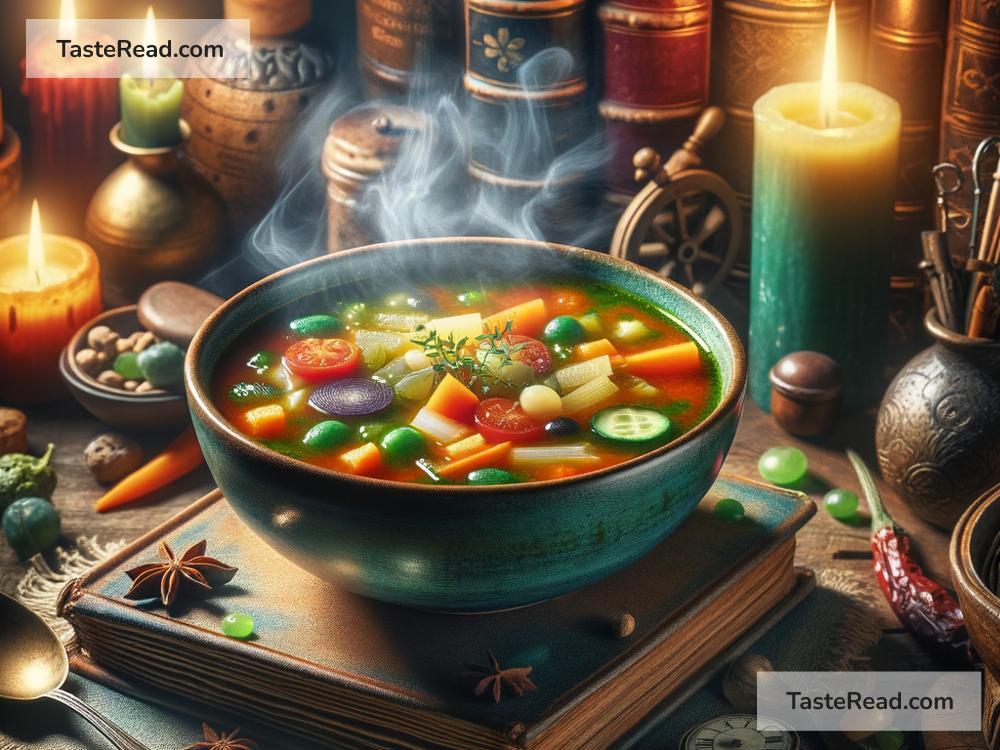The Legend of the Soup That Reveals Hidden Truths
Food, throughout history, has been tied to rituals, stories, and mysteries. From magical elixirs to ancient bread recipes that supposedly brought enlightenment, we see how humans have imbued the act of eating with deeper meanings. But amidst these tales, there exists a story so peculiar and thought-provoking that it continues to spark curiosity: the legend of “Truth-Telling Soup.”
This enchanting tale comes from an unnamed village, whispered to exist in the misty valleys of a forgotten era. The story is simple, yet profound. A quiet traveler with a mysterious past stumbled upon the village one day, bringing with him neither riches nor fame, but the recipe for a soup that had the power to reveal hidden truths.
A Soup Like No Other
Legend has it that the soup was made from a blend of simple, humble ingredients. There were no rare spices or exotic roots required to create it. Rather, the core of the soup came from hearts of honesty: fresh vegetables grown by individuals who had never spoken lies, water drawn from a spring uncontaminated by deceit, and herbs picked by someone whose intentions were pure.
When someone consumed the soup, it did not cast an overt spell or reveal truths in a loud, dramatic fashion. Instead, the person who ate it would find themselves unable to lie, forced to speak only the truth they carried deep in their heart. Secrets that had been buried for years, truths that people had been afraid to confront—they all came pouring out, often shaking the very foundations of relationships or reshaping lives.
The Gift and the Curse
The arrival of the soup in the village marked a significant transformation. People who once avoided uncomfortable subjects started speaking of their fears, regrets, and desires. It was said that when someone consumed the soup, they experienced a sense of clarity—like lifting a dense fog. Things blurred by biases and pain suddenly made sense.
However, the soup wasn’t beloved by all. It held great consequences that many were not prepared to face. While sharing truths could strengthen bonds, the uncovering of lies had its own price. Quarrels broke out between families, lovers parted ways, and some villagers found it unbearable to confront the unfiltered version of themselves.
One story is particularly remembered: that of an elder woman named Mirella, who long kept a family secret. She had always told her children that their late father was a heroic figure who had died saving others. But upon consuming the soup out of curiosity, she confessed that he had actually abandoned the family, leaving her alone to fend for their survival. Her children were stunned, but they eventually came to respect the hardships Mirella endured and forgave her for creating a story she thought would protect them. In time, her honesty brought them closer together.
The Traveler’s Warning
The traveler, full of wisdom, warned the villagers not to abuse the soup. The power to reveal truths came with responsibility. Fools rushed to consume it merely for amusement, using it to draw secrets out of others without reflection. But those who approached it with humility and intention found its deeper purpose: self-realization and liberation.
The traveler explained that truth, while illuminating, could also be difficult to bear. It demanded courage, bringing with it the weight of accountability and change. It’s one thing to discover someone else’s truth, and another to face your own.
Eventually, the traveler left, disappearing into the unknown as mysteriously as he had arrived. Though he carried the recipe for the soup, he promised that the village had what it needed to recreate it. But here’s the twist: only those who were ready to embrace absolute honesty could make it correctly. Even if one ingredient—the fresh vegetables, pure water, or carefully picked herbs—came from dishonesty, the soup would lose its power.
Did It Really Exist?
Over the years, skeptics have debated whether the legend of the Truth-Telling Soup is real or merely a metaphor for the human condition. Could it simply represent the idea that our ability to be honest with ourselves and others has transformative power? Perhaps it symbolizes how the act of sharing truth, though difficult, can ultimately lead to growth, healing, and understanding.
Regardless of its authenticity, the story strikes a chord. Imagine if eating a bowl of soup could push us to confront unspoken feelings or unveil the lies we tell ourselves daily. What would we do with such clarity? Would we feel liberated or burdened?
The soup represents the delicate balance between truth and its consequences. It reminds us that while truth can set us free, it also requires us to navigate the complexities it may create. The villagers learned something about humanity that remains relevant today: hiding behind falsehoods may feel safe, but living in honesty—though hard—carries a unique beauty.
The Lesson of the Soup
So, what can we take from the legend of the Truth-Telling Soup? Perhaps the real essence of the story is this: truth, like soup, is best served warm, with a dose of tenderness. Shoving honesty down someone’s throat without care leads to bitterness. But when approached with patience, kindness, and mindfulness, the truth becomes a gift that nourishes and heals.
Although we may never taste the fabled soup, we can learn its lesson: to live authentically, share our truth with compassion, and accept the hidden truths within ourselves. Allow those around you to see who you truly are. It’s not always easy, but it’s worth the effort. Like the simple ingredients that make up the soup, honesty is the cornerstone a fulfilling life is built upon.
Who knows? Maybe the recipe for the soup is hidden within each of us, waiting for the moment we are brave enough to create it.


